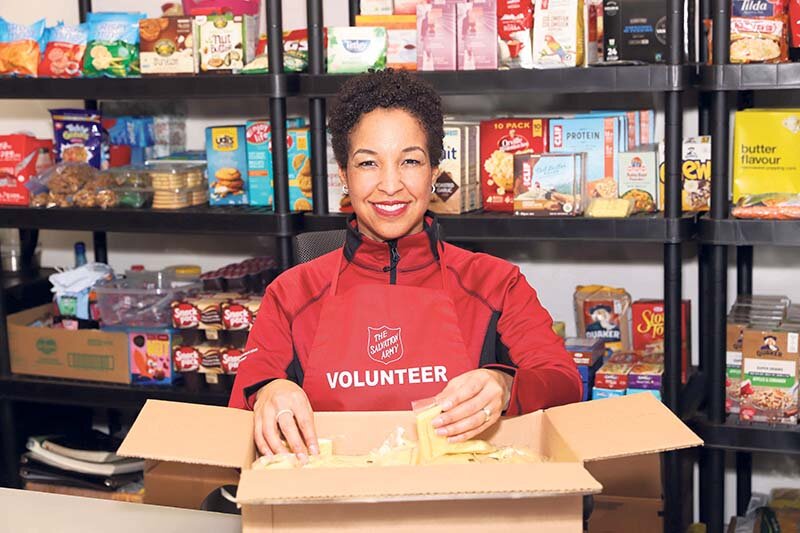Is pandemic poverty next?
A volunteer at one of the many food banks The Salvation Army operates across Canada. supplied
The Salvation Army meets the ever-changing challenges facing the communities it serves
The impact of the COVID-19 pandemic has been felt across Canada, but nowhere more so than in communities where childhood poverty and food insecurity were already a challenge. As a result, The Salvation Army has seen a 20 to 50 per cent year-on-year increase in the number of people accessing their help.
“Many of these people were first-time users of the food bank who had never anticipated they would need that kind of help,” says Lieutenant-Colonel John Murray, The Salvation Army’s territorial secretary for communications, noting that the organization had to respond quickly to meet the sudden increased demand for services across the country.
“We know from our own statistics that about 35 per cent of food bank users are children. That is deeply concerning for us as an organization, so it’s important to turn the spotlight on food insecurity and child poverty, especially in light of the stress and strain the pandemic has added to families.
”
Bolstered by two grants totalling $20-million from Agriculture and Agri-Food Canada, and $10-million from the Rogers Foundation – the largest private donation the organization’s Canadian arm has received in its 139-year existence – plus support from the Weston Family Foundation and McCain Foods, The Salvation Army is playing a pivotal role in providing support to people in need during the pandemic, including increasing capacity at food banks, delivering food to vulnerable families and providing opportunities for children to socialize through initiatives such as day camps.
“We know from our own statistics that about 35 per cent of food bank users are children,” says Lt.-Col. Murray. “That is deeply concerning for us as an organization, so it’s important to turn the spotlight on food insecurity and child poverty, especially in light of the stress and strain the pandemic has added to families.”
He points out that one in five children in Canada lives in poverty.
“That’s just unacceptable today. We live in a country rich in natural resources, rich in opportunity, and all Canadians should have that equal opportunity. We shouldn’t see children living in poverty,” he says.
While it’s critical to continue to address food insecurity – The Salvation Army helped more than 2.8 million people with food support in the last year – the goal is to break the cycle of poverty.
Programs such as Pathway of Hope, which identifies root causes for people living in poverty and then provides targeted services to those who want to escape that cycle, are hugely important, says Lt.-Col. Murray.
But while The Salvation Army in Canada has 252 family services offices in 400 communities that offer practical counselling and opportunities to learn about such topics as budgeting and preparing healthy, nutritious meals, the reality is that it takes a community and multiple agencies to address the issue.
“There’s strength in partnerships, and we believe in being an innovative partner and reaching out and connecting with other agencies in the community to build bridges and support people – we believe we’re stronger together,” he says.
Tackling a complex subject like child poverty takes time, investment, energy, a commitment on the part of parents, assistance from Salvation Army personnel, community support and the resources of The Salvation Army and its partners to effect real change, says Lt.-Col. Murray.
“You are changing one life at a time, but it’s important to remember that by investing in one individual, if you look at the long game, you’re changing the trajectory of the lives of future generations,” he says.
Looking to the future as communities anticipate emerging from the threat of COVID-19, Lt.-Col. Murray believes the true impact of the coronavirus has yet to be realized.
“Not until we’re out of it will we see the toll the pandemic has taken on so many. Will people get their jobs back with the same hours and salaries? How will people deal with rising interest rates and inflation? These are tough questions to answer right now, but The Salvation Army will continue to assess and analyze our current reality and impending trends so we can be best prepared to meet the ever-changing challenges facing the communities we serve,” he concludes.
More information: SalvationArmy.ca
For more stories from this feature, visit globeandmail.com

